A guide that sheds light on how to celebrate Easter Week in Seville
Easter week in Seville is one of the very best times of the year to visit the city. The Spanish take their religious holidays very seriously, but Easter in Andalucia sees some of the most dramatic and meaningful celebrations to mark the death and resurrection of Christ.
Known as Semana Santa in Spain, Easter in Seville involves an entire week of celebrations. It really is a stunning and fascinating time to get a taste of the authentic side of Andalucia.
So, are you ready to find out more about the different things to do in Seville during Easter week? Then read on and learn about how this important religious holiday is celebrated here.
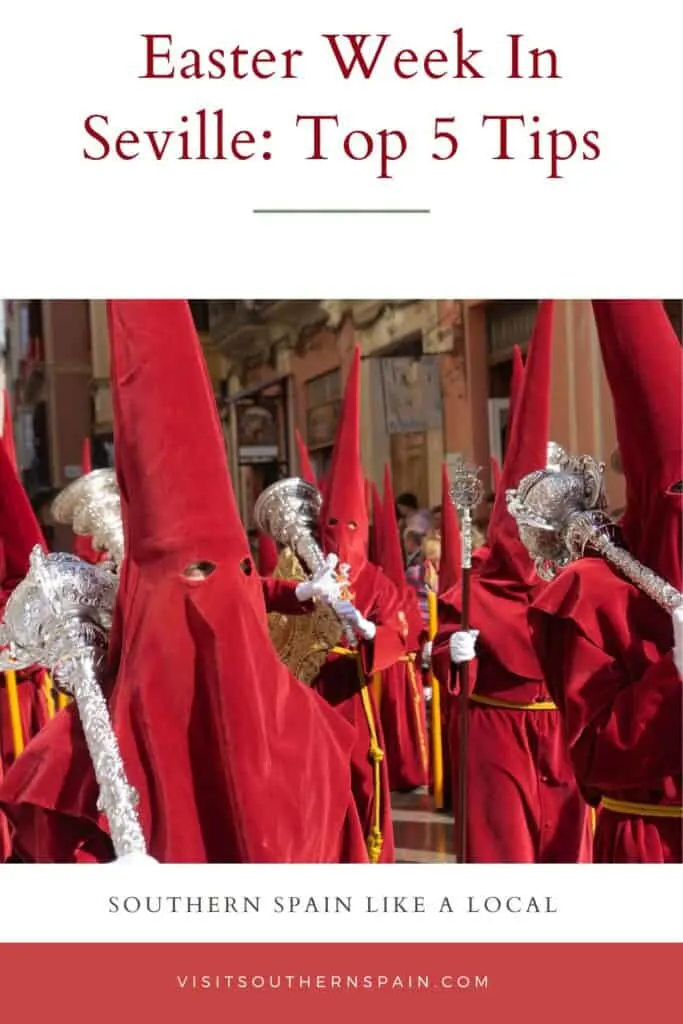
You, dear reader, support this blog. If you purchase through a link, we earn a small commission. As an Amazon Affiliate, we earn from qualifying purchases.
Pssst…!!?? You can’t get enough of Seville? Have a look at my other posts:
Timeline of Easter Week In Seville
- Friday of Sorrows – Modest processions take place outside the central streets.
- Saturday of Passion – Five brotherhoods carry out their processions during Vespers.
- Palm Sunday – This important day of celebration sees locals wearing their best pastel clothing to tour the city’s churches and watch the official afternoon Brotherhood processions.
- Monday of Holy Week – This quieter day is the time to experience the Vera Cruz Paso and the El Museo floats.
- Tuesday of Holy Week – The Bofeta procession with local children, La Candelaria and the procession from the University are all highlights of this day.
- Wednesday of Holy Week – This busy day sees grand processions, including the Passion of the Christ.
- Holy Thursday – This busy day of processions features the Los Negritos and the La Pasion parades, amongst others.
- Good Friday (early hours) La madrugá sees local women wearing their traditional black Mantillas as a symbol of mourning.
- Good Friday – The early morning processions are truly spectacular, especially the El Silencio with its dramatic silent atmosphere and the joyful Los Gitanos return.
- Holy Saturday – This is a quieter and more solemn day of processions.
- Easter Sunday – The El Rusucitado exit is the main procession today.
Easter Week In Seville
1. Semana Santa Processions
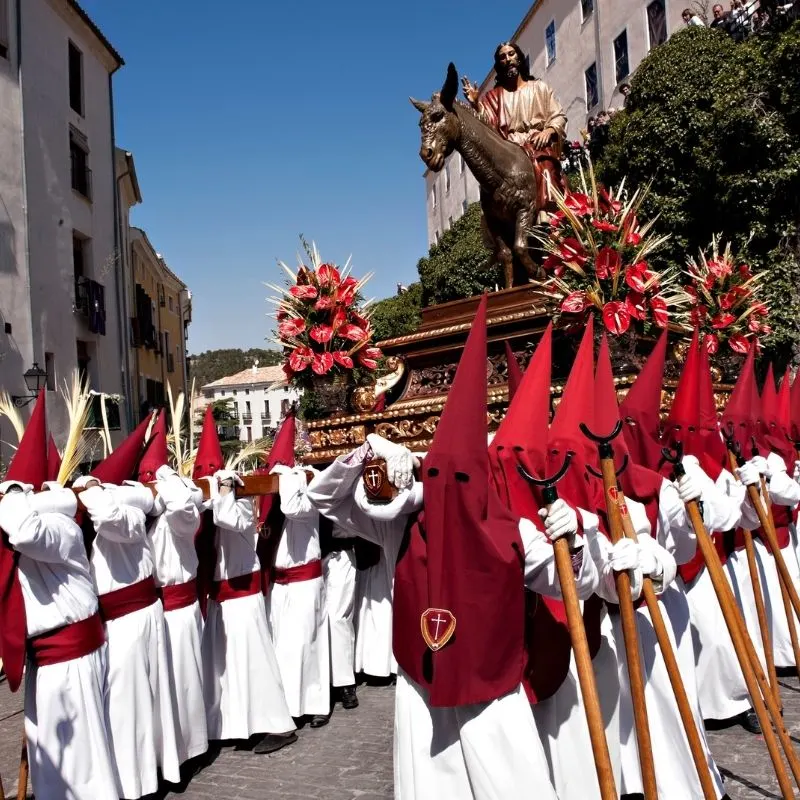
A key element of the Easter festival in Seville, Spain, is the spectacular Easter week timeline of processions. Semana Santa in Andalucia sees no less than 60 different processions across the length and breadth of the city.
Often, there will be multiple processions taking place simultaneously, with up to nine in different areas at any one time.
During Semana Santa, Seville is known for its huge pasos or floats. Each one artistically represents an element of the Passion story, and some are more than three centuries old.
The pasos are all intricately decorated, have lit candles at night for even more atmospheric appeal, and are dedicated to either El Cristo (Christ) or La Virgen (Virgin Mary).
The statues leave their churches and progress through the city’s narrow streets until they reach the cathedral.
After passing through it, they return to their home churches in processions that can last 12 hours or even longer.
The floats are carried by local people – as many as 60,000 of them throughout the Seville Semana Santa.
These traditional processions are a demonstration of grief and mourning for Christ’s death. Local people take part in public penance and to show their religious devotion.
However, even visitors from overseas can enjoy the spectacle, even if they aren’t religious themselves.
2. Penitents and Nazarenos
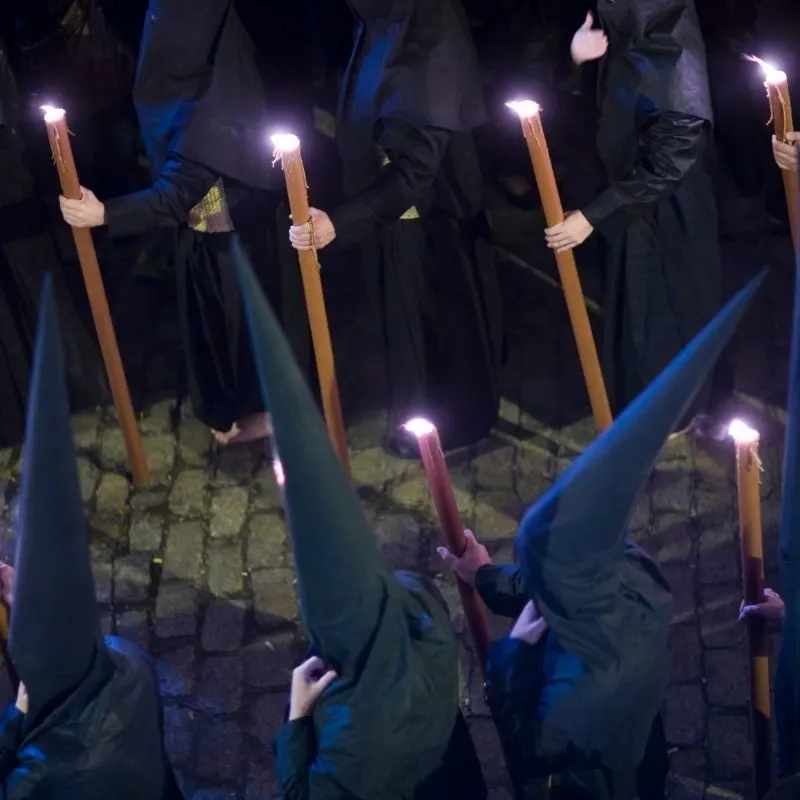
The main participants in the Seville Easter procession are known as nazarenos and penitents.
The nazarenos wear long white robes and conical hoods which hide the wearer’s faces while the penitents walk barefoot holding a cross.
The biggest Seville Easter parade will see as many as three thousand penitents taking part.
Brotherhoods
Seville has more than a hundred churches, with each one having its own Hermandad or brotherhood.
These brotherhoods take responsibility for organizing the processions held during Easter in Seville, with each one holding its own procession on a specific day along a certain route to avoid two processions clashing with each other.
More than 60 of these processions follow the Official Route that starts at the Plaza de las Campanas and ends at the cathedral.
Some of the most important brotherhoods to take part in the celebrations held in Easter in Seville, Spain, include:
- La Borriquita
- La Cena
- Los Negritos
- El Silencio
- El Gran Poder
- Macarena
- Los Gitanos
Parades take place every single day of Holy Week in Sevilla, although the most important and best-attended ones take place on Palm Sunday, Maundy Thursday and Good Friday.
The night of Maundy Thursday into the early hours of Good Friday sees some of the most dramatic and spectacular events of the entire Easter celebration in Seville, Spain, and these really are a must-see for any visitor.
Although there are 60 different processions during the whole Seville Easter festival, there are a few key processions held on each day of the festivities:
- Palm Sunday – La Borriquita – a representation of Jesus’ entry into Jerusalem on a donkey with many children involved in the procession, and La Cena, which represents the Last Supper.
- Monday of Holy Week – La Veracruz or True Cross, and the El Museo procession.
- Tuesday of Holy Week – La Candelaria or Candlemas and El Dulce Nombre, otherwise known as La Bofeta, represents the servant who slapped Jesus in the face.
- Wednesday of Holy Week – La Sed and Cristo de Burgos are two of the main processions on this busy day.
- Holy Thursday – The Los Negritos and La Pasion parades are two of the most important during the day.
- Good Friday – Good Friday’s most important processions take place in the early hours of the morning, with El Silencio and Los Gitanos being must-sees.
3. Unique Traditions and Customs
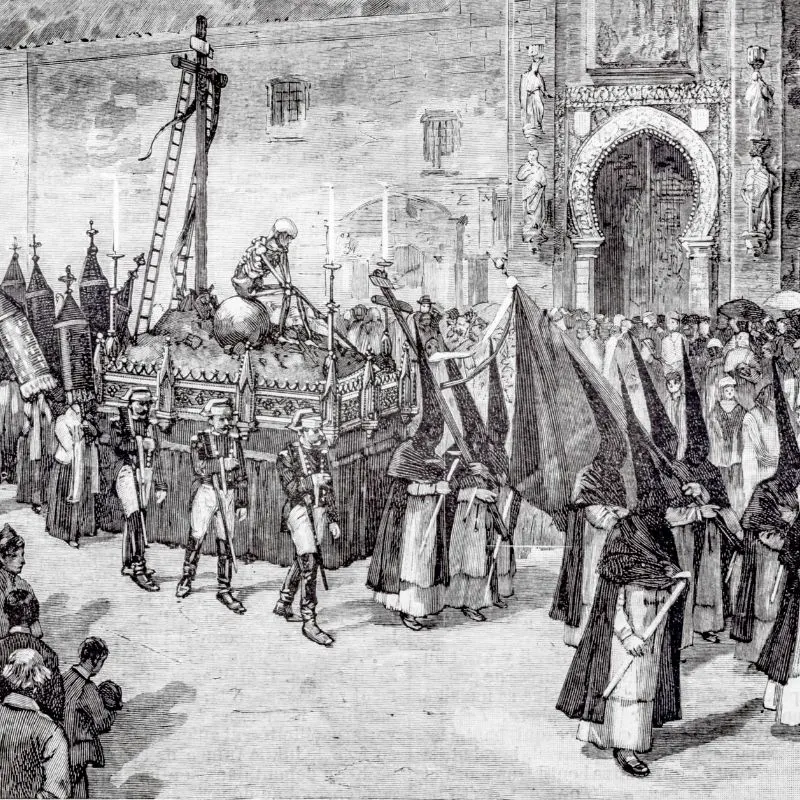
The Nazarenos are the most iconic element of Easter Week in Seville. If you ask anyone how Semana Santa is celebrated in Spain, they’re likely to mention the sight of these unusually dressed individuals.
While their plain robes may not be too eye-catching, their conical hoods, also known as capirotes look very similar to those associated with the KKK. However, there is no connection at all between the two.
The term “Capirotes” comes from an Arabic word that means “people who wear turbans”.
The distinctive headwear takes the shape of a tall, pointed hat made from cardboard and covered with an antifaz or cloth.
The appearance of the Nazarenos can be explained by answering the question, “What is the history of Semana Santa?”
Essentially, people wanted to repent their sins without ever revealing who they were, hence the hoods, which leave only their eyes visible to onlookers.
Each brotherhood has its own version of the traditional tunic, with many different colors on display.
The soberest brotherhoods will wear darker shades, while the most important and joyful brotherhoods will have brighter colors and more flamboyant designs.
The Mantilla
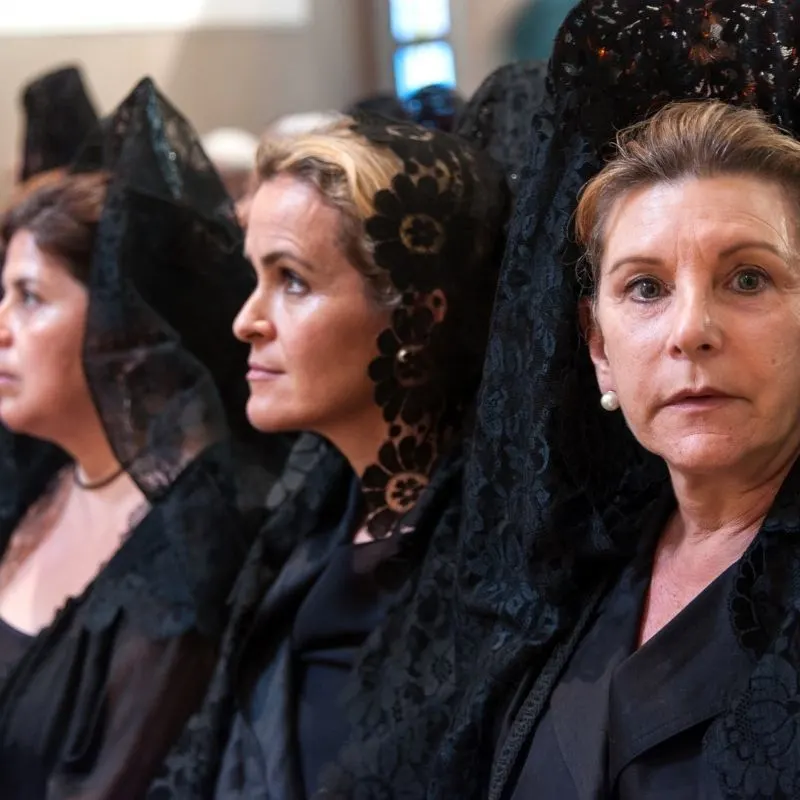
Women have their own special outfits to commemorate Easter Week in Seville. The Mantilla or black lace veil is traditionally worn by mourning women and is the classic mode of dress on Maundy Thursday and sometimes for Good Friday too.
The Mantilla headpiece is made from intricately woven lace with exceptional detail and is difficult to fit in place since hair has to be woven around its comb so it stays in position.
Along with the veil, women wear a black dress, which usually extends to below the knee, and a pair of black shoes. They wear minimal jewelry with this outfit, although a rosary is traditionally carried.
On Palm Sunday, you’ll see everybody wearing their smartest clothes. Women will usually wear dresses or suits in pastel shades, while men usually wear blue suits. Even children will be dressed in their finery.
Churches and streets will also be decorated for the occasion, and the atmosphere in the streets is often joyous, with bands and musicians everywhere.
The Saeta
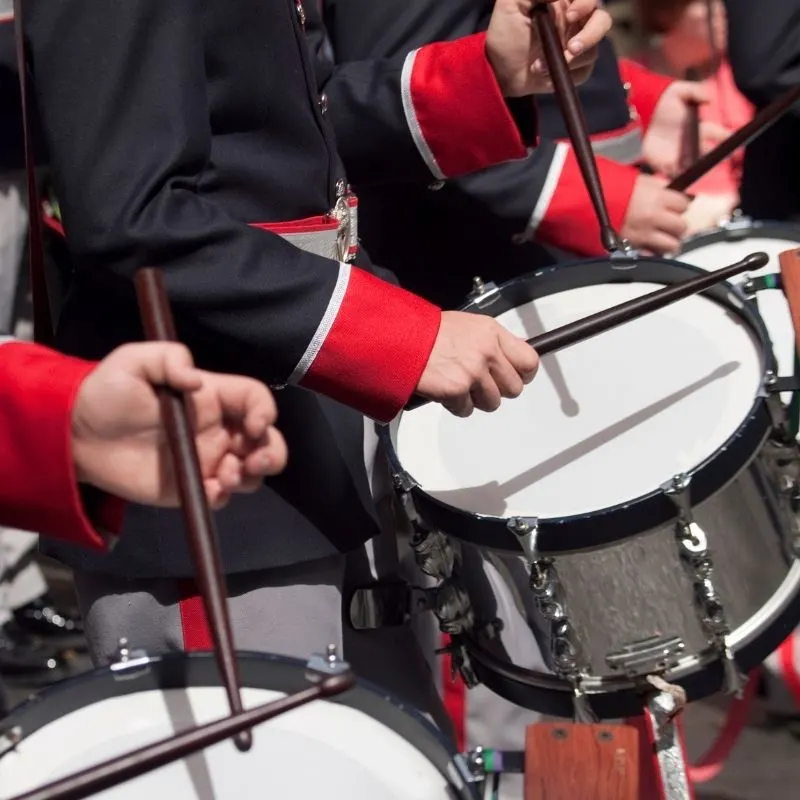
The Saeta is a key element of the celebration – an acapella religious song that is performed at certain points during each procession.
Easter Week in Seville also boasts its own culinary highlights. Many locals follow the “Vigilia Pascual,” which involves temporarily abstaining from eating meat on Good Friday.
On this day, it is therefore common for people to make recipes using cod, such as Bacalao Croquettes, and most restaurants will have their own special menu, especially for people who are participating in the tradition.
Some incredible local foods are traditionally eaten as part of the celebrations, including:
- Torrijas – a bread that traditionally contains honey or sugar.
- Potaje de vigilia – a combination of cod, spinach, and chickpeas. Sometimes, this dish is known as Espinacas con Garbanzos.
- Bunuelos – a delicious sweet fried dough dish with sprinkled sugar on top. Often, the Spanish bunuelos recipe is dipped in chocolate as a tasty snack or dessert for Easter Sunday in Seville, Spain.
- Spanish Pestinos – these popular Andalusian sweets are usually eaten during the Christmas celebrations, but they’re also commonly found as part of Easter Week in Seville too.
- Buñuelos de Bacalao – The savory version of the Bunuelos de viento, made with salted cod fish
- Bacalao al Pil-Pil – A spicy dish made with salted cod and garlic olive-oil sauce
4. Must-See Landmarks and Churches
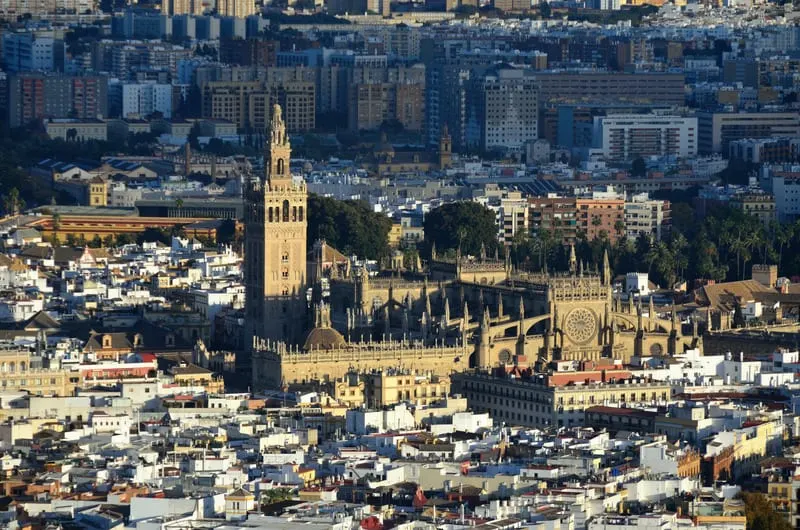
Many tourists choose to visit the churches that will be hosting the processions during the day since a lot of the parades take place in the afternoons and evenings.
There are some truly iconic churches in Seville, such as the Iglesia del Salvador, close to Plaza Nueva and the Basilica of Jesus del Gran Poder. – Check the guided tour here
A visit to Seville’s world-famous cathedral is another must-do during your trip. Its noteworthy tower, La Giralda, is a landmark of the city that is recognized across the globe.
You should certainly dedicate some time to climbing this tower and admiring the impressive city views from the top.
La Giralda is historically important to the city, while the cathedral is the site of Christopher Columbus’s tomb, making it a crucial spot on any tourist’s to-do list.
Even if you have mobility issues, you can still access the tower’s viewpoint as the ascent is made using a ramp.
Some tourists prefer to take a guided tour of the cathedral and La Giralda to get the best possible insight into its heritage.
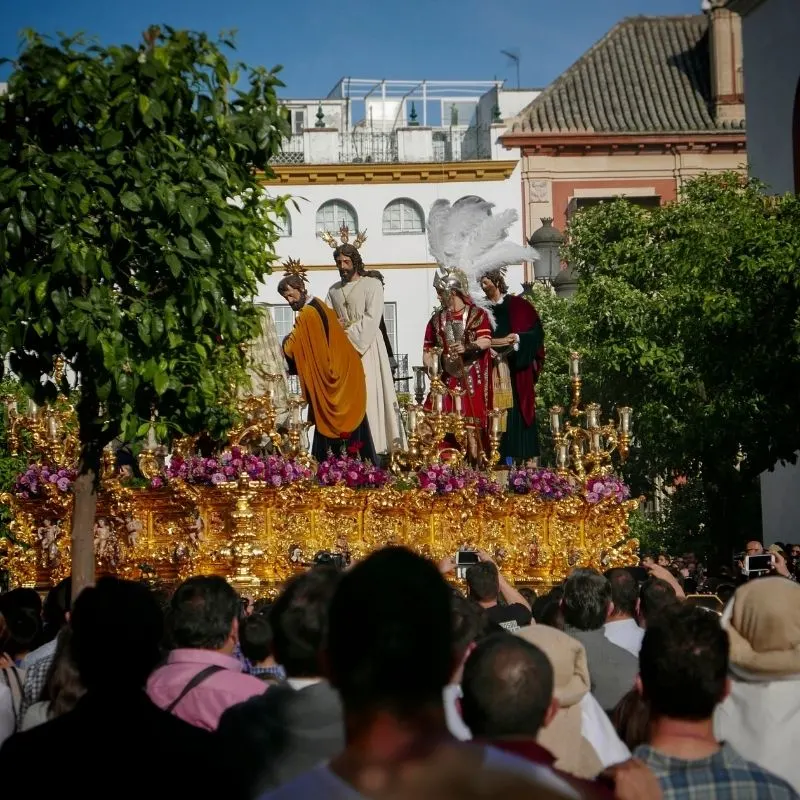
One of the most important things to keep in mind when navigating Easter Week in Seville is to be well-organized.
Remember that a lot is going on, and on many days, the streets will be crowded, so you’ll need to plan a schedule for yourself.
The most vital thing to remember, though, is that you’ll never manage to do and see everything, so don’t even try!
Once you know the Semana Santa in Spain date, you can start looking for information about the various events that will be planned.
You’ll find detailed online lists that answer all your questions, such as “What time does the Easter parade start?” and the days and locations for key moments in the proceedings.
You can use these details to start organizing your trip.
There are many different viewing spots for processions that you can choose to wait in, but keep in mind that all of the best areas will be very crowded.
The best places, hands-down, are on terraces and balconies around the city, and often, you can pay to rent a spot with an excellent panorama of the processions.
There are a few key places you might want to head to to get a good view of the floats:
- The Triana Bridge is an excellent viewing point for La Estrella, San Gonzalo and La O.
- The Plaza de los Terceros for La Cena.
- The Plaza de la Concordia for La Veracruz.
- Cardenal Spinola for El Dulce Nombre.
- Jardines del Murillo for La Candelaria.
- Calle Recadero for Los Negritos.
- Plaza del Museo for El Gran Poder.
- Plaza Ponce de Leon for Los Gitanos.
- Calle Feria for La Macarena.
You should make sure to wear smart clothing if you’re visiting the processions on Palm Sunday. You should also refrain from making any derogatory or offensive comments about any aspect of the proceedings.
As Easter Week in Seville is extremely popular both with locals and tourists alike, you’ll also need to make sure to plan your stay and book your accommodation well in advance.
Conclusion on the Easter Week in Seville
No doubt spending Easter Week in Seville allows you to get a deeper insight into the unique culture of this part of Spain.
The rich traditions on display at this key time in the year help travelers understand the religious convictions of the Spanish people and the spectacular ways in which they choose to demonstrate their faith.
Of course, it’s also a chance to take part in one of the most amazing experiences and to sample an authentic taste of the real Andalusia.
Semana Santa is a significant holiday across the whole of Spain, and, indeed, across all Catholic nations, but few places celebrate the occasion in such style as Seville.
Even if you aren’t especially religious yourself or adhere to a completely different faith, you’re sure to still find the processions stunning and moving and well worth your time and effort.
If you’re ready to experience this truly unique cultural celebration of faith, don’t hesitate to arrange your trip to spend Easter Week in Seville.
You won’t regret it, and you’re guaranteed to have a memorable time! Check out other places where is Semana Santa celebrated in Spain.
Where to stay during Easter Week in Seville
- Best Hotels in Seville with Pool
- Best Holiday Villas in Seville
- Resorts in Seville
- Cheap Hotels in Seville
- AirBnbs in Seville
- Family Hotels in Seville
- Boutique Hotels in Seville
Short FAQ about the Easter Week in Seville
What are the 3 most notable days of Semana Santa?
The three most notable days of Semana Santa are Palm Sunday, Maundy Thursday and Good Friday.
On all three of these days, there are amazing processions and meaningful moments that are never forgotten once experienced.
El Silencio and Los Gitanos are just two of the key processions that mark these important days.
Is Easter a good time to visit Seville?
It’s always a good time to visit Seville! But Easter Week in Seville offers a unique experience that you won’t find at any other time of the year.
If you hate crowds, you may want to plan your visit at Easter carefully, but the festivities are so amazing that it’s well worth making the trip.
Is Seville closed during Easter?
Schools are closed at Easter, and Maundy Thursday and Good Friday are public holidays, so you can expect many businesses to be closed down.
Public monuments are usually open during Easter Week in Seville, although usually just during the mornings.
Restaurants along procession routes may be closed or serving a reduced menu.
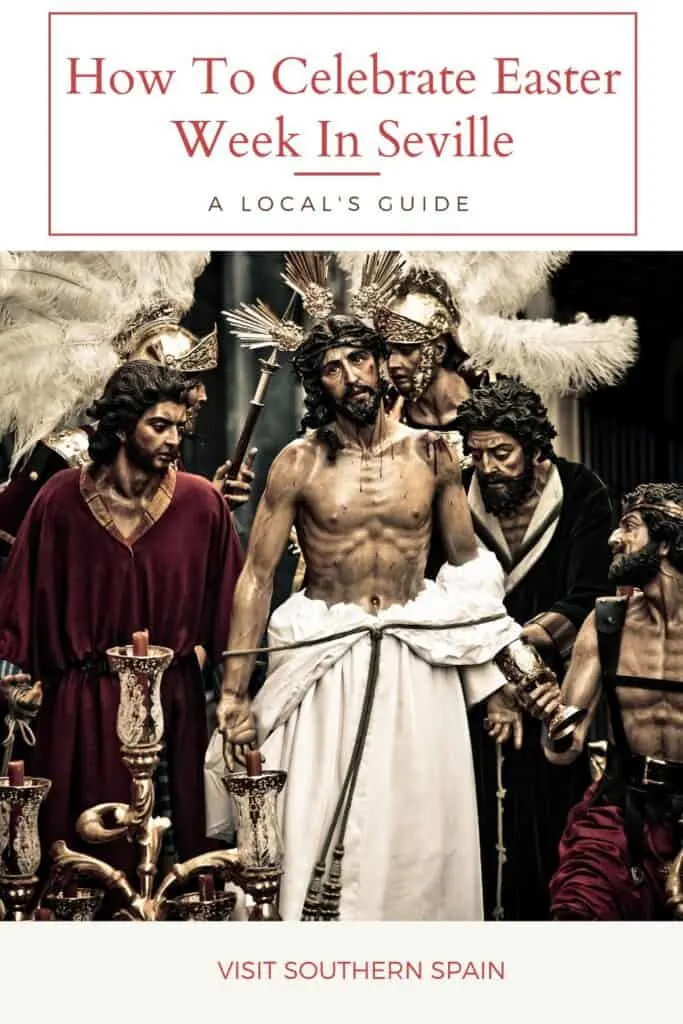
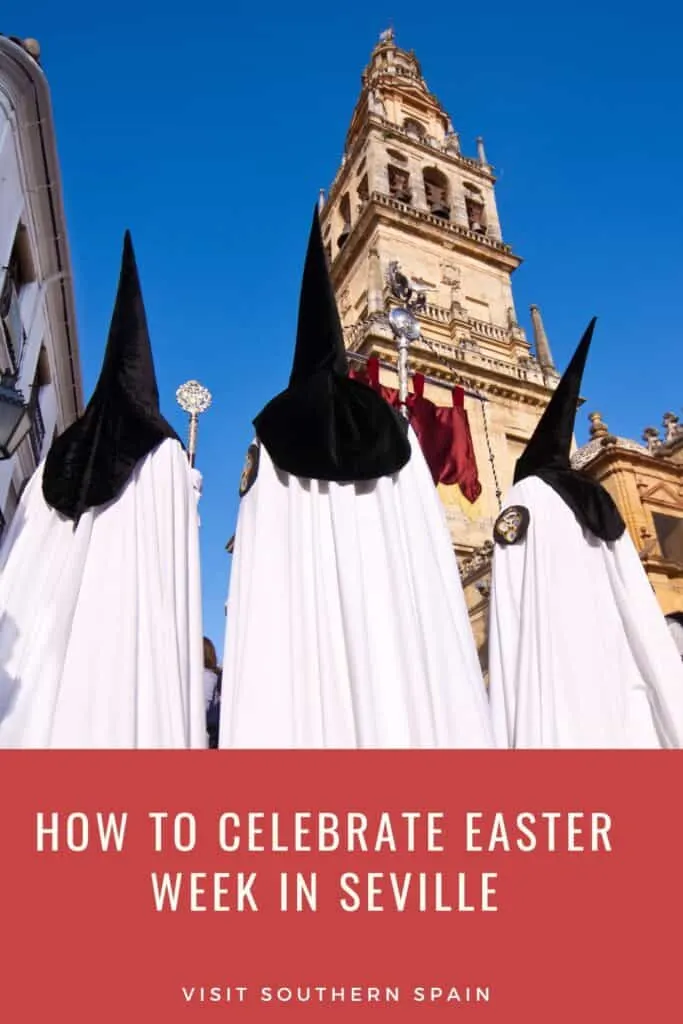
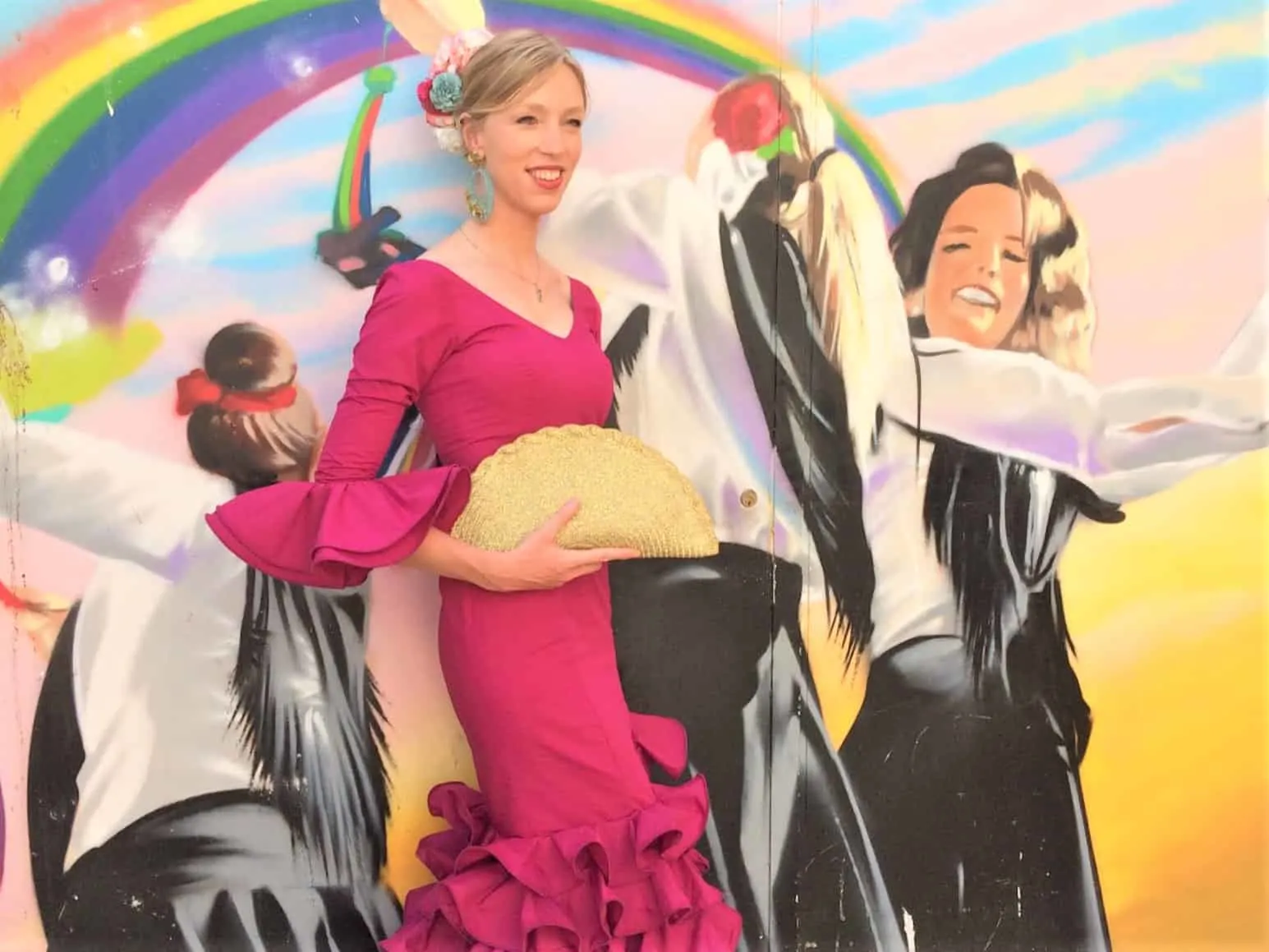
Hola, I’m Paulina! Together with my team, we are passionate about Southern Spain. Here we share all you need to know for great times in Southern Spain with the best places to visit, stay and, of course, the best food to eat.
Let’s dive in and explore Southern Spain’s outdoors, food and culture con pasión!
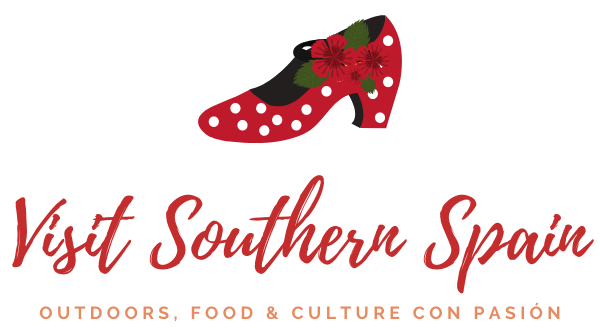
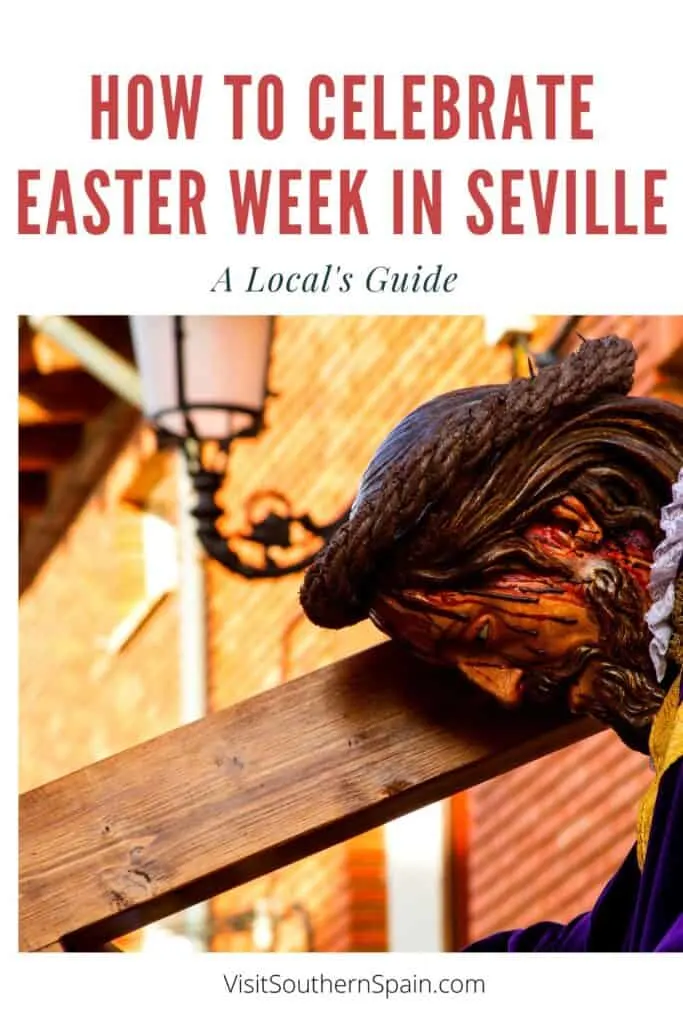
![b7e336515349d9fcd576fe7e4852b0217805875a - Easter Week In Seville [5 Best Things to Know]](https://bucket.mlcdn.com/a/1958/1958864/images/b7e336515349d9fcd576fe7e4852b0217805875a.png)